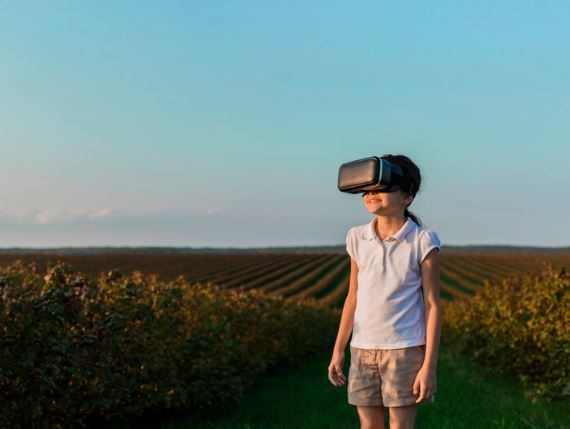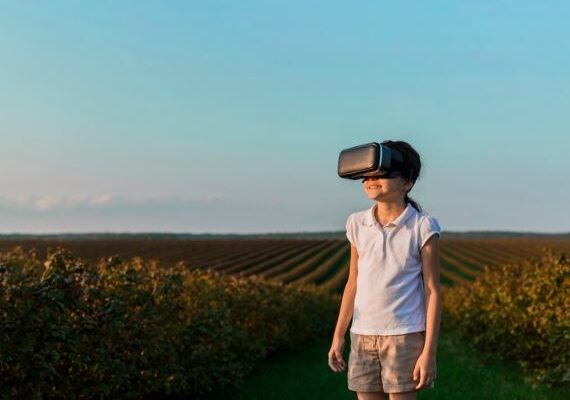Introduction
In our era of technological innovation, augmented reality (AR) stands out as a transformative force reshaping industries, revolutionizing user interactions, and opening up new frontiers. Let’s delve into the exciting realm of AR development and its profound impact on our daily lives.

Embracing Augmented Reality: A Paradigm Shift
Augmented reality seamlessly integrates digital content with the real world, enriching our perception and interaction with our environment. Unlike virtual reality, which immerses users in entirely simulated environments, AR overlays digital information onto physical surroundings, enhancing reality rather than replacing it.
Applications Across Industries
- Gaming and Entertainment: AR has redefined gaming by bringing digital characters and environments into the real world. Games like Pokémon GO illustrate AR’s potential to captivate global audiences with immersive experiences.
- Retail and E-commerce: AR is transforming retail by enabling virtual try-on experiences, interactive product demonstrations, and immersive shopping. Customers can visualize furniture in their homes or try on virtual clothing before making purchases.
- Education and Training: AR enhances learning with interactive educational content. From anatomy lessons using 3D models to virtual field trips, AR makes education more engaging and effective.
- Healthcare and Medicine: In healthcare, AR aids in surgical planning, medical training, and patient education. Surgeons use AR to visualize complex anatomical structures during procedures, while students practice in virtual environments.
The Augmented Reality Development Process
Creating AR experiences demands creativity, technical expertise, and user-centric design:
- Conceptualization: Define goals, target audience, and user experience objectives.
- Design and Prototyping: Create wireframes and prototypes to visualize interactions.
- Development: Implement AR using tools like Unity3D, ARKit, or ARCore, integrating 3D graphics and sensor data.
- Testing and Iteration: Conduct thorough testing, gather feedback, and refine the application.
- Deployment: Prepare for deployment on mobile devices, AR glasses, or headsets through app stores or enterprise channels.
The Future of Augmented Reality
AR’s evolution promises limitless possibilities, enhancing productivity and transforming user interactions across various sectors. Advancements in hardware, software, and user experience design position AR as an integral part of daily life.
Augmented Reality: Bridging Virtual and Physical Realms
Augmented reality is a catalyst for innovation, offering immersive experiences that blend digital and physical environments seamlessly. From its origins in the 1960s to modern advancements in smartphones and computing, AR has evolved into a powerful tool for enhancing human interaction with technology.
Unlocking New Dimensions of Possibility
- Education and Training: AR enriches learning with virtual simulations and interactive lessons.
- Retail and E-commerce: AR enhances shopping with virtual product try-ons and immersive shopping experiences.
- Healthcare and Medicine: AR aids in surgery, medical training, and patient care with real-time data overlays.
- Architecture and Design: AR facilitates visualizing building plans and engaging clients in design reviews.
Augmented Reality Development Best Practices
- User-Centric Design: Prioritize intuitive interactions and seamless integration with physical environments.
- Performance Optimization: Ensure smooth and responsive experiences by optimizing AR applications.
- Accessibility and Inclusivity: Design for diverse user needs and ensure usability for all.
- Privacy and Security: Implement robust measures to protect user data and comply with regulations.
Embracing the Future of Augmented Reality
As AR continues to evolve, fueled by innovation and technology, its impact on society, culture, and commerce will grow. Augmented reality development pioneers a future where digital and physical realities converge, reshaping how we experience the world.
Conclusion: Shaping a New Reality
Augmented reality development marks a paradigm shift in technology interaction, blurring boundaries between virtual and physical worlds. Embrace AR’s transformative potential as we redefine reality through limitless technological possibilities. Together, we shape a future where imagination drives innovation and reality knows no bounds.

